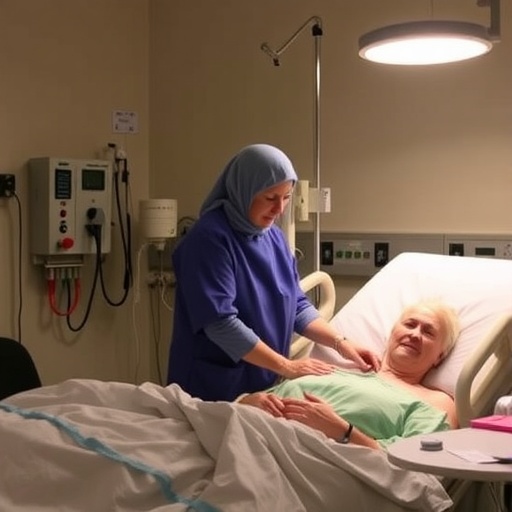In recent years, the intricate landscape of primary healthcare policies in Iran has garnered scholarly attention, particularly regarding the implications these policies have on equity within the system. A critical analysis of this subject, undertaken by researchers Moradi, Yousefzadeh, and Mohamadi, sheds light on how historical and contemporary policymaking has shaped the healthcare experience for Iranians. Their findings, published in BMC Health Services Research, highlight the multifaceted interplay between governmental strategies and health equity, illuminating the roadmap of progress while revealing persistent challenges.
The essence of healthcare equity revolves around the fundamental principle that all individuals, regardless of socioeconomic status, geographical location, or educational background, should have access to quality health services. In Iran, the historical context is particularly compelling, as the country has navigated a series of political and social upheavals that have invariably influenced its health policies. From the establishment of the Islamic Republic to the ongoing reforms under various administrations, each era has left an indelible mark on the healthcare framework.
Moradi and colleagues embarked on this research project not merely as an academic exercise but as an urgent exploration in light of global discussions surrounding health equity, especially following the COVID-19 pandemic. They sought to analyze how the narratives from policymakers, who craft the guidelines and frameworks for health services, reflect a commitment—or lack thereof—to equitable healthcare delivery. With the backdrop of a complex societal fabric in Iran, the researchers aimed to achieve a dual goal: understanding historical precedents and identifying pathways for improvement.
One of the dominant themes emerging from the analysis is the visibility of inequities, which not only affect access to services but also shape the quality of care received. The researchers examined testimonies from various stakeholders, including community leaders and healthcare providers, that illuminated discrepancies across urban and rural settings. While Tehran benefits from advanced medical infrastructure, many provinces lag, revealing a significant divide that calls into question the fairness of healthcare distribution.
Moreover, the insistence on equity in health policies is exacerbated by economic factors. Iran’s economy has faced sanctions and fluctuations, significantly impacting funding for public health initiatives. Policymakers’ perspectives reveal a consistent struggle to align resource allocation with the urgent needs of vulnerable populations. The study underscores that equity must not be viewed as a peripheral objective but as a central tenet guiding the design and implementation of health strategies.
The role of governmental health organizations cannot be understated in this context. The Iranian health system is characterized by a dual structure, comprising both a public and private healthcare sector. The researchers argue that without a coordinated approach between these sectors, gaps in service delivery continue to persist. The historical approach to health policy in Iran, often reactive rather than proactive, has contributed to ongoing disparities that hinder overall population health outcomes.
Community health initiatives have also been assessed through this critical lens. Moradi et al. highlight that grassroots movements often serve as vital conduits for enhancing health equity. These initiatives not only address immediate health needs but foster a sense of agency among local populations. By engaging communities in the decision-making process, the researchers advocate for policies that are more inclusive and attuned to local realities.
The implications of the analysis extend beyond the Iranian context. As countries worldwide grapple with the challenges of equitable healthcare, the researchers argue that Iran’s experiences offer valuable lessons. The evolution of health policy in response to societal needs showcases the dynamic nature of governance in public health. Policymakers elsewhere can draw insights from Iran’s trajectory, especially when considering how historical contexts inform current practices.
Another significant takeaway from the research is the role of international collaboration. In a globalized world, health challenges transcend borders; therefore, collaborative efforts can bolster the capabilities of national healthcare systems. The Iranian experience underscores the necessity of dialogue and partnership with international organizations, which can lend technical support and resources to enhance equity-focused health strategies.
In discussing innovation in healthcare, the study delves into the potential of technology to bridge some of the gaps in service delivery. Telemedicine, digital health records, and mobile health applications could serve as powerful tools in augmenting access, particularly in underserved areas. However, the authors caution that reliance on technology should not undermine the fundamental need for human interaction in healthcare interactions.
Furthermore, the researchers note that the enhancement of educational programs for healthcare professionals is critical for advancing equity. A workforce that is educated in the principles of equity and equipped to tackle the unique challenges faced by diverse populations is indispensable. The authors stress the importance of ongoing training that emphasizes cultural competence, understanding of social determinants of health, and commitment to equitable care.
As a conclusion, this critical analysis provides a comprehensive overview of how Iran’s primary healthcare policies have been shaped over time and the inequities that persist within the system. The perspectives captured from policymakers reveal the complex nature of healthcare governance, emphasizing that commitment to equitable healthcare requires not only policy changes but a cultural shift in how health is perceived across society. The authors advocate for a holistic approach that integrates historical insights, community engagement, and innovative solutions, all aimed at achieving a sustainable and equitable healthcare system for all Iranians.
By recognizing the importance of equity as a fundamental principle in health policy, the study calls not only for reform but a rethinking of approaches to health that address the root causes of inequality. As the world continues to change and evolve, understanding and addressing these issues in the healthcare sector remains a pressing imperative for researchers, policymakers, and communities alike.
Subject of Research: The impact of Iranian primary healthcare policies on equity.
Article Title: How Iranian primary health care policies influenced equity: a historical critical analysis from policymakers’ perspectives.
Article References: Moradi, T., Yousefzadeh, N., Mohamadi, E. et al. How Iranian primary health care policies influenced equity: a historical critical analysis from policymakers’ perspectives. BMC Health Serv Res 25, 1527 (2025). https://doi.org/10.1186/s12913-025-12736-3
Image Credits: AI Generated
DOI: https://doi.org/10.1186/s12913-025-12736-3
Keywords: Primary healthcare, equity, Iran, health policy, historical analysis, healthcare access, socioeconomic factors, community health initiatives.
Tags: BMC Health Services Research findingschallenges in health equitygovernmental strategies in Iranian healthcarehealthcare equity in Iranhealthcare experience in Iranhistorical analysis of health policiesimpact of COVID-19 on health equityinequities in Iranian health systemIranian health policiespolitical influences on health policiesprimary healthcare reforms in Iransocioeconomic factors in healthcare access





